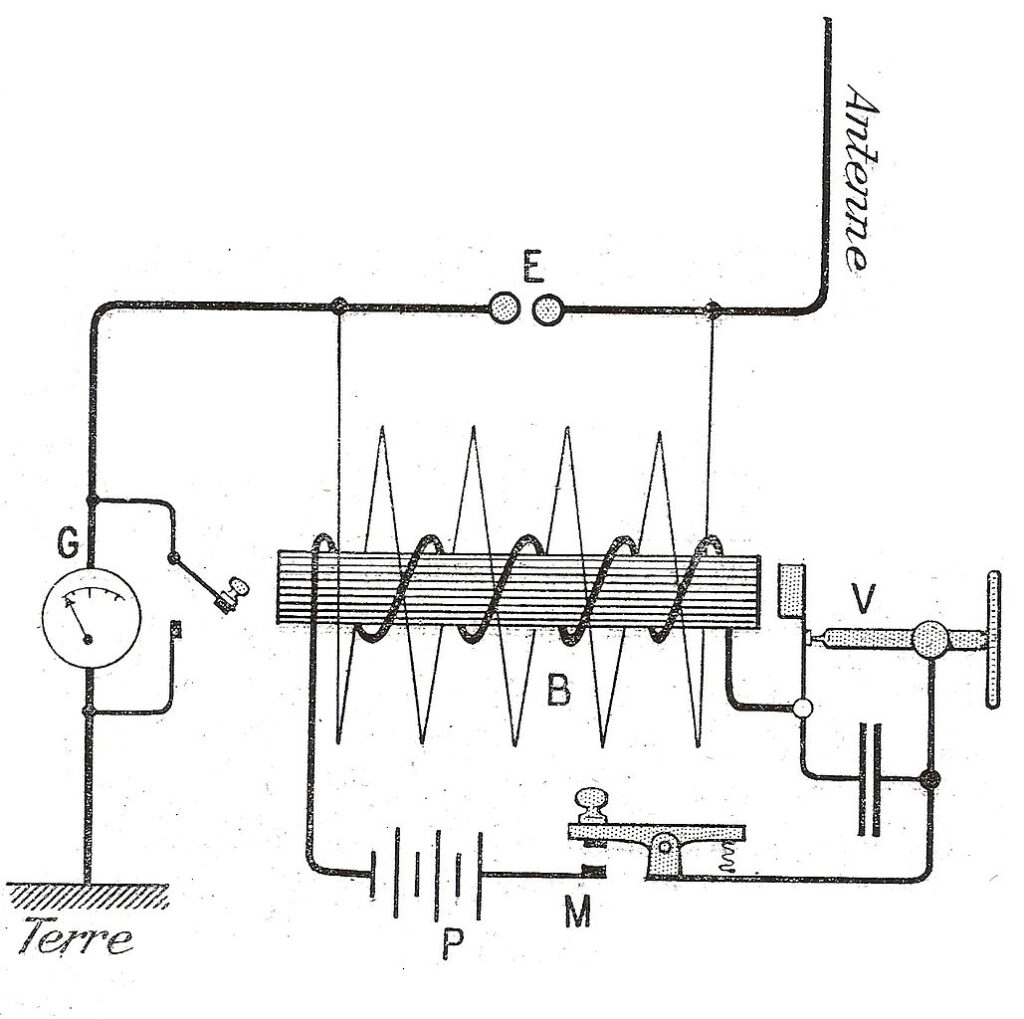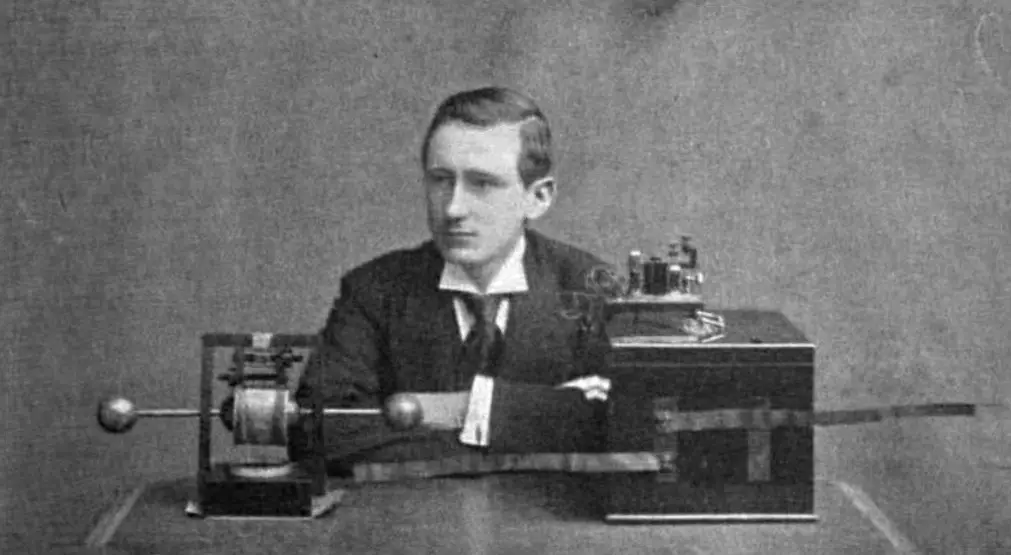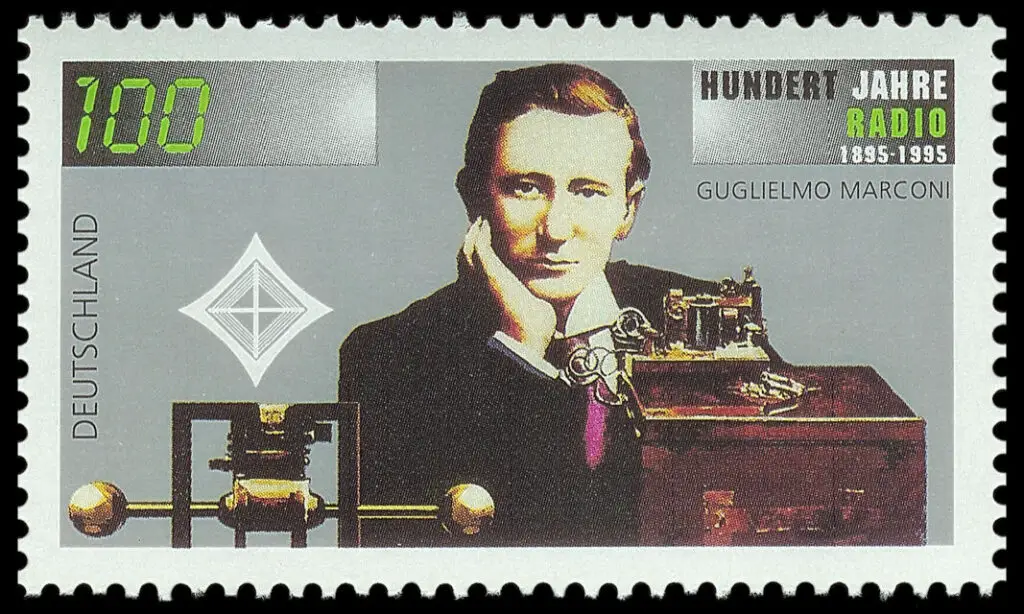In 1895, Guglielmo Marconi achieved a feat that would forever change the way humanity communicates: he developed the first practical system for long-distance radio signaling. Marconi’s pioneering work demonstrated that information could be transmitted over vast distances without wires, using electromagnetic waves. This groundbreaking invention not only laid the foundational principles for modern radio technology but also opened up new horizons for global communication, effectively earning him the title of the father of long-distance radio transmission.
Let’s explore Marconi’s seminal contributions to the field of radio technology, tracing the technical innovations and challenges he navigated along the way. We will examine how his work laid the groundwork for the vibrant world of amateur radio, inspiring a legacy of experimentation and innovation that thrives to this day. By exploring Marconi’s achievements and their implications for radio communication, we seek to provide a comprehensive understanding of his enduring impact on the amateur radio community and beyond.
International Marconi Day, April 27, 2024
This year, International Marconi Day (IMD) is on April 27. Italian inventor and electrical engineer Guglielmo Giovanni Maria Marconi was born on April 25, 1874, and is credited for inventing the radiotelegraph system, creating Marconi’s law, and sending the first wireless transmission over the open sea.
IMD was created to honor Marconi and is hosted annually by the Cornish Radio Amateur Club, GX4CRC. The purpose of the day is for amateur radio enthusiasts around the world to contact historic Marconi sites using communication techniques similar to those that he would have used.
The 24-hour event will operate from 0000 UTC to 2359 UTC, and registration is required. Participants can register at GX4CRC’s registration web page.
Stations in the United States, including Marconi Cape Cod Radio Club, KM1CC, in Massachusetts, are already registering for the event. KM1CC hosts several on-air events each year to keep the accomplishments and story of Marconi and his wireless station site in South Wellfleet alive. In 1975, the Wellfleet station was listed as a National Historic Landmark on the National Register of Historic Places and is now part of Cape Cod National Seashore, a unit of the National Park Service. When possible, KM1CC sets up a temporary radio station inside the park. More information about KM1CC is available on their Facebook page.
https://www.arrl.org/news/international-marconi-day-2024
Marconi’s Early Life and Inspiration
The story of Guglielmo Marconi, who fundamentally altered the landscape of global communication, begins in 1874 in Bologna, Italy. Embedded in an environment rich with intellectual stimulation and having the advantage of accessible family resources, Marconi nurtured a growing fascination with the sciences from a young age, particularly electricity and electromagnetism. This interest was not merely academic; it was a passion that propelled him into the vanguard of technological innovation.
Background and Early Interests
Even in his formative years, Marconi demonstrated an exceptional curiosity about the nature of electromagnetic phenomena. His childhood home became the first laboratory for his experiments, a place where he could delve into the mysteries of electrical circuits and, eventually, the transmission of signals through the air. This early experimentation was characterized by a willingness to challenge and extend the boundaries of contemporary communication technologies.
Marconi’s endeavors were not solitary pursuits. His family’s support was instrumental, providing him with the means to experiment freely. This support, coupled with his innate drive to understand and manipulate the invisible forces of electricity and magnetism, set Marconi on a path toward groundbreaking discoveries.
The Scientific Milieu of the Late 19th Century
The latter part of the 19th century was a period of intense scientific discovery, with electromagnetism at the forefront of fields poised to redefine the technological capabilities of the era. The confirmation of electromagnetic waves’ existence by Heinrich Hertz opened up a new domain of exploration. However, the practical application of this discovery, especially in the realm of long-distance communication, remained uncharted territory.
In this environment of burgeoning scientific knowledge, Marconi saw untapped potential. He was particularly inspired by the works of James Clerk Maxwell and Heinrich Hertz, whose theoretical and experimental work provided the underpinnings of electromagnetic wave propagation. Marconi’s vision extended beyond the laboratory; he imagined a world interconnected by invisible waves, enabling communication unbound by the physical constraints of wires or the Earth’s curvature.
This vision placed Marconi at odds with the established scientific consensus of his time. The practical implications of electromagnetic waves for communication were largely unappreciated, and skepticism was rife among the scientific community. Despite this, Marconi remained undeterred. His ambition—to harness electromagnetic waves for the purpose of long-distance communication—was bold and unprecedented.
Embarking on a Revolutionary Path
Marconi’s foundational years were marked by an insatiable curiosity and a relentless pursuit of knowledge, driven by the desire to bring the theoretical into the realm of the practical. His early experiments in his makeshift home laboratory laid the groundwork for what would become his life’s work: the creation of a practical system for long-distance radio communication. This ambition, fueled by the dynamic scientific landscape of the late 19th century and Marconi’s own innovative spirit, set the stage for a series of discoveries that would forever change how humanity connects.
The Birth of Radio: Marconi’s Initial Experiments
Guglielmo Marconi’s exploration into the potential of Hertzian waves to facilitate wireless communication was a monumental leap towards connecting the world in ways previously unimagined. His work in the mid-1890s marks a cornerstone in the evolution of radio technology, laying down the practical aspects of what would become a global communication revolution.
Marconi’s First Wireless Telegraphy Experiments
In the pivotal year of 1895, Marconi commenced practical experiments to validate his theories on wireless telegraphy. His initial setup was deceptively simple yet innovative, incorporating a spark-gap transmitter to generate radio waves and a coherer as the signal detector. These experiments, conducted in the open space of his family’s garden in Italy, successfully demonstrated the transmission of Morse code signals across a few meters without the need for physical wire connections between the transmitting and receiving units. This early success was a tangible proof of concept for wireless communication over short distances.
Technical Innovations in Marconi’s Apparatus
Marconi’s apparatus for these initial experiments was a masterclass in ingenuity and applied physics.
Spark-Gap Transmitter
At the heart of Marconi’s transmitter was the Ruhmkorff coil or induction coil, a device capable of producing high-voltage sparks. These sparks created rapid oscillations in the spark-gap, effectively generating radio waves. Marconi’s utilization of the spark-gap transmitter was instrumental in proving that electromagnetic waves could carry information over distances beyond direct line of sight.

Coherer as a Detector
The coherer, a simple glass tube filled with metal filings, served as the receiver’s detector. The impact of the radio waves caused the filings to clump together, completing a circuit and signaling the reception of a message. This early form of signal detection was crucial in demonstrating the reception of transmitted signals.
Use of Antennas
Marconi’s strategic addition of antennas to both transmitter and receiver was perhaps his most significant technical innovation. The antennas—mere wires at the time—were instrumental in increasing the distance over which signals could be effectively transmitted and received. They served two primary functions: efficiently radiating the generated radio waves into the atmosphere and capturing incoming waves at the receiver’s end. This not only improved the quality and reach of the transmission but also underscored the importance of antenna design and placement in wireless communication.
Ground Systems
Another groundbreaking advancement in Marconi’s wireless telegraphy system was the incorporation of ground systems. By grounding both the transmitter and receiver, Marconi significantly enhanced the clarity and range of the transmission. This technique effectively completed the circuit for the electromagnetic waves, facilitating a more stable and clearer signal transmission over increased distances. The concept of grounding, now a fundamental principle in radio communication, was a testament to Marconi’s deep understanding of the electromagnetic theory and its practical application.
Through these initial experiments and technical innovations, Marconi not only validated the concept of wireless communication but also laid the groundwork for the future of radio technology. His pioneering use of antennas, grounding techniques, and the spark-gap transmitter revolutionized the way information was transmitted, marking the dawn of the wireless age. Marconi’s early work demonstrated that long-distance wireless communication was not only possible but practical, setting the stage for the myriad advancements that would follow in the realm of radio and beyond.
Marconi’s Impact on Communication Technology
The innovations introduced by Guglielmo Marconi in wireless communication profoundly influenced the development of technologies that have become central to modern life. His contributions have had lasting effects on both public safety systems and the evolution of broadcasting and telecommunication.
Maritime Safety and the Wireless Telegraph
Marconi’s wireless telegraph proved instrumental in enhancing maritime safety. It enabled ships to maintain communication with the mainland and other vessels over vast distances, fundamentally changing rescue operations at sea. The most notable example of its impact was during the Titanic disaster in 1912, where the ship’s wireless operators used Marconi’s technology to send distress signals that ultimately saved lives. This event highlighted the critical importance of wireless communication for maritime safety, leading to the adoption of laws mandating wireless equipment on board ocean liners.

Foundation for Modern Wireless Communication
Marconi’s experiments with wireless telegraphy paved the way for the vast array of wireless technologies we rely on today:
- Radio Broadcasting: The concept of using radio waves for broadcasting emerged from the principles Marconi developed. His work showed that it was possible to transmit not only telegraphic messages but also voice and music, laying the groundwork for the radio broadcasting industry that would emerge in the early 20th century.
- Mobile Telephony: While the development of mobile phones was a complex process involving many innovations beyond Marconi’s initial work, the fundamental idea of transmitting information through electromagnetic waves underpins all modern mobile communication. Marconi’s legacy is evident in the global network of cellular communication, from the infrastructure that supports it to the devices that connect billions of people worldwide.
Challenges and Controversies
The journey of Guglielmo Marconi from an intrigued experimenter to the father of long-distance radio transmission was fraught with a complex array of challenges. These ranged from the inherently technical obstacles of a nascent technology to intense legal battles over the rights to these innovations.
Technical and Legal Challenges
On the technical front, Marconi faced the daunting task of refining wireless communication to make it viable for long-distance transmission. Early experiments were limited by the range and clarity of signals, with natural phenomena such as the Earth’s curvature and atmospheric conditions presenting significant barriers. Innovating within this space required not just ingenuity in engineering but also a deep understanding of electromagnetic theory and its practical applications.
Simultaneously, as Marconi’s work began to show promise and garner attention, it also attracted legal challenges. The late 19th and early 20th centuries were a period of rapid technological advancement, with many inventors working on similar problems. This environment led to overlapping patents and disputes over who had first discovered or invented key aspects of wireless technology. Marconi’s efforts to patent his own inventions often collided with existing patents, leading to a series of legal disputes that required as much navigation as the technical challenges he faced in the lab.
Competition with Other Inventors
The field of wireless communication was not only crowded but also highly competitive. Inventors like Nikola Tesla and Oliver Lodge were also making significant contributions to the science of electromagnetism and its application to wireless transmission. This competition was not limited to scientific discovery but extended into the realm of intellectual property rights, where securing patents became as crucial as the innovations themselves. The battle for patent rights was fierce, reflecting the potential commercial and strategic value of wireless communication technology.
Navigating Challenges to Commercialize Radio Technology
Marconi’s approach to overcoming these multifaceted challenges was strategic and multifaceted. Technologically, he relentlessly pursued improvements in his system, from enhancing signal strength and reliability to devising new methods for overcoming interference. Each innovation was a step toward making wireless communication a practical reality for long-distance transmission.

Legally, Marconi was adept at navigating the complex patent landscape. He filed numerous patents to protect his inventions, engaged in legal battles to defend his rights, and, in some cases, negotiated agreements with other inventors to consolidate his position. Moreover, recognizing the commercial potential of wireless telegraphy, Marconi did not shy away from public demonstrations of his technology, which helped garner the interest and support of both the public and potential investors.
In commercializing radio technology, Marconi’s strategies extended beyond the laboratory and the courtroom. He understood the importance of proving the practical applications of his inventions, securing contracts with shipping companies and governments that saw the value in wireless communication for maritime safety and military communications. This pragmatic approach to demonstrating the utility of his technology was pivotal in establishing wireless communication as a vital tool in modern society.
Conclusion
Guglielmo Marconi’s pioneering efforts in the late 19th and early 20th centuries laid the groundwork for the development of radio technology, marking the dawn of long-distance wireless communication. His successful transmission of the first wireless signals across the Atlantic in 1901 shattered previous limitations, proving that information could travel beyond the constraints of physical connections. Marconi’s innovations, including his development of tuned circuits, directional antennas, and the systematic use of the electromagnetic spectrum, have left an indelible mark on the field of communications.
Marconi’s work transcends its historical context, continuing to resonate within the amateur radio community today. His spirit of experimentation and relentless pursuit of technological advancement embody the core values of amateur radio enthusiasts worldwide. In an era where digital technologies dominate, the principles of radio transmission discovered and refined by Marconi remain fundamental. Amateur radio operators continue to experiment with and explore the capabilities of radio waves, driven by the same curiosity and ingenuity that characterized Marconi’s work.
In providing a foundation for the technologies that underpin modern communication systems, Marconi helped to create a more connected world. For amateur radio operators, Marconi’s legacy is a testament to the power of innovation and the critical role of wireless communication in bridging distances and bringing people together. As the field continues to evolve, the principles laid down by Marconi will undoubtedly continue to guide and inspire future generations of enthusiasts, underscoring the enduring importance of innovation and experimentation in advancing the science of radio communication.
Learn More…
For those interested in the groundbreaking work of Guglielmo Marconi and the development of long-distance radio transmission, here’s a selection of resources for further reading:
- Wikipedia’s Entry on Guglielmo Marconi: Offers a comprehensive overview of Marconi’s life, including his early years, scientific contributions, and awards. It discusses his invention of the radio wave–based wireless telegraph system and his receipt of the Nobel Prize in Physics with Karl Ferdinand Braun in 1909.
- History.com Article: Chronicles Marconi’s journey from his initial experiments in Italy to his groundbreaking transatlantic broadcast in 1901, and discusses his receipt of the Nobel Prize and contributions to maritime safety, notably during the Titanic disaster.
- Britannica’s Biography of Marconi: Provides detailed insights into Marconi’s experiments with radio, his innovations such as the use of antennas and grounding systems, and his impact on communication technology.
- JSTOR Daily’s Feature on Marconi: Reflects on Marconi’s significance just months after his death, highlighting his early wireless communication experiments and their impact on the development of radio.
- RadioFidelity.com’s Celebration of Marconi: Discusses Marconi’s first wireless telegraphy patent and the controversies surrounding his claim to the invention of the radio, including challenges from fans of Nikola Tesla.
- The Canadian Encyclopedia on Marconi: Explores Marconi’s early life and his pioneering experiments with radio, detailing how he overcame technical challenges and skepticism to achieve long-distance wireless communication.
- Marconi: The Man Who Networked the World 1st Edition, by Marc Raboy
- Signor Marconi’s Magic Box: The Most Remarkable Invention Of The 19th Century & The Amateur Inventor Whose Genius Sparked A Revolution, by Gavin Weightman
- Guglielmo Marconi: Building the Wireless Age, by Tim Wander


